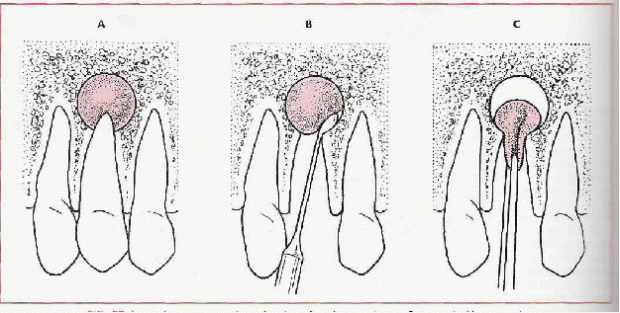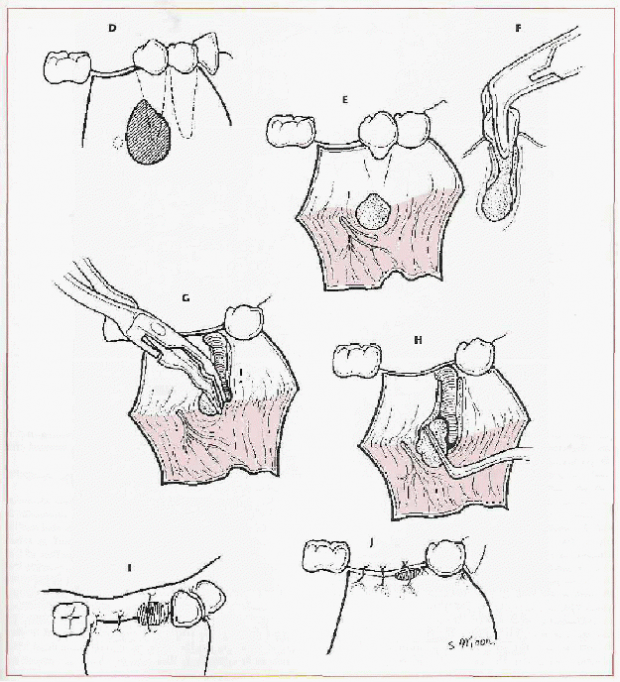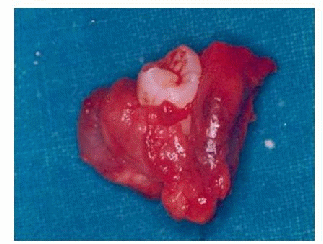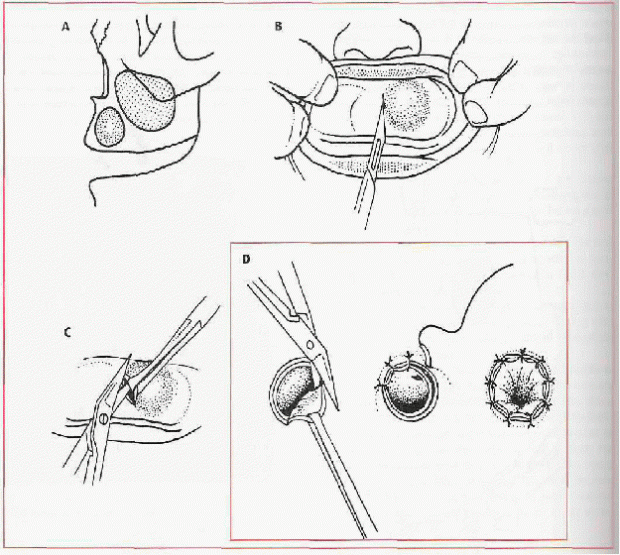Enucleation Vs Marsupialization
In this Brief Article, We explain the main differences between Enucleation and marsupialization which are both different methods used to treat cysts.
ENUCLEATION
Definition
- Total removal of a cystic lesion is achieved.
- A shelling-out of the entire cystic lesion without rupture.
- Enucleation of cysts should be performed with care, in an attempt to remove the cyst in one piece without fragmentation, which reduces the chances of recurrence by increasing the likelihood of total removal.
Indications
The treatment of choice for removal of a cyst of the jaws and should be used with any cyst of the jaw that can be safely removed without unduly sacrificing adjacent structures.
Advantages
- The main advantage of enucleation is that pathological examination of the entire cyst can be undertaken.
- Another advantage is that the initial excision biopsy (i.e., enucleation) has also appropriately treated the lesion.
- The patient does not have to care for a marsupial cavity with constant irrigation.
- Once the mucoperiosteal access flap has healed, the patient is no longer bothered by the cystic cavity.
Disadvantages
- If any of the conditions outlined under the section on indications for marsupialization exist, enucleation may be disadvantageous.
- For example, normal tissue may be jeopardized, fracture of the jaw could occur, de-vitalization of teeth could result, or associated impacted teeth that the clinician may wish to save could be removed.
Technique
- Special considerations à The use of antibiotics is unnecessary unless the cyst is large or the patient’s health condition warrants it.
- The periapical or radicular cyst is the most common of all cystic lesions of the jaws and results from inflammation or necrosis of the dental pulp.
- Because it is impossible to determine whether a periapical radiolucency is a cyst or a granuloma, removal at the time of the tooth extraction is recommended.
- When extracting teeth with periapical radiolucencies, enucleation via the tooth socket can be readily accomplished using curettes when the cyst is small.
- Caution is used in teeth whose apices are close to important anatomic structures, such as the inferior alveolar neurovascular bundle or the maxillary sinus, because the bone apical to the lesion may be very thin or nonexistent.



Large cysts
With large cysts, a mucoperiosteal flap may be reflected and access to the cyst obtained through the labial plate of bone, which leaves the alveolar crest intact to ensure adequate bone height after healing.
- Once access to a cyst has been achieved through the use of an osseous window, the dentist should begin to enucleate the cyst.
- Care must be exercised to avoid tearing the cyst and allowing the cystic contents to escape because margins’ of the cyst are easier to define if the cystic wall is intact.
- Furthermore, the cyst separates more readily from the bony cavity when the intracystic pressure is maintained.
In large cysts or cysts proximal to neurovascular structures, nerves and vessels are usually found pushed to one side of the cavity by the slowly expanding cyst and should be avoided or handled as a-traumatically and as little as possible.
-
- Once the cyst has been removed, the bony cavity should be inspected for remnants of tissue.
- Irrigating and drying the cavity with gauze will aid in visualizing the entire bony cavity.
- Residual tissue is removed with curettes.
- The bony edges of the defect should be smoothed with a file before closure.
- After enucleation, watertight primary closure should be obtained with appropriately positioned sutures.
- The bony cavity fills with a blood clot, which then organizes over time.
- Radiographic evidence of bone fill will take 6 to 12 months.
- Jaws that have been expanded by cysts slowly remodel to a more normal contour.
MARSUPIALIZATION
Definition
- Marsupialization, decompression, and the Partsch operation all refer to creating a surgical window in the wall of the cyst, evacuating the contents of the cyst, and maintaining continuity between the cyst and the oral cavity, maxillary sinus, or nasal cavity.
- The only portion of the cyst that is removed is the piece removed to produce the window.
- The remaining cystic lining is left in situ.
- This process decreases intracystic pressure and promotes shrinkage of the cyst and bone fill.
Indications
- Amount of tissue injury.
- Assistance in the eruption of teeth
- Surgical access.
- The extent of surgery.
- Size of cyst
Advantages
- The main advantage of marsupialization is that it is a simple procedure to perform.
- It may spare vital structures from damage should immediate enucleation be attempted.
Disadvantages
- The major disadvantage of marsupialization is that pathological tissue is left in situ, without thorough histological examination.
- Another disadvantage is that the patient is inconvenienced in several respects.
- The cystic cavity must be kept clean to prevent infection because the cavity frequently traps food debris.
- In most instances, this means that the patient must irrigate the cavity several times every day with a syringe.
Technique
- Prophylactic systemic antibiotics are not usually indicated in marsupialization.
- After anesthetization of the area, the cyst is aspirated.
- If the aspirate confirms the presumptive diagnosis of a cyst, the marsupialization procedure may proceed.
- The initial incision is usually circular or elliptic and creates a large (1 cm or larger) window into the cystic cavity.
- If the bone has been expanded and thinned by the cyst, the initial incision may extend through the bone into the cystic cavity.
- If the overlying bone is thick, and osseous window is removed carefully with burs and rongeurs.
- The cyst is then incised to remove a window of the lining, which is submitted for pathologic examination.
- The contents of the cyst are evacuated, and, if possible, visual examination of the residual lining of the cyst is undertaken.
- Irrigation of the cyst removes any residual fragments of debris.
- Areas of ulceration or thickening of the cystic wall should alert the clinician to the possibility of dysplastic or neoplastic changes in the wall of the cyst.
- In this instance, enucleation of the entire cyst or incisional biopsy of the suspicious area or areas should be undertaken.
- If the cystic lining is thick enough and if access permits, the perimeter of the cystic wall around the window can be sutured to the oral mucosa.
- Otherwise, the cavity should be packed with strip gauze impregnated with a tincture of benzoin or an antibiotic ointment and left in place for 10 to 14 days to prevent the oral mucosa from healing over the cystic window.
Marsupializing cysts of the maxilla
The clinician has two choices of where the cyst will become exteriorized:
-
- the cyst may be surgically opened into the oral cavity as just described
- into the maxillary sinus or nasal cavity.
For cysts that have destroyed a large portion of the maxilla and encroached on the antrum or nasal cavity, the cyst may be approached from the facial aspect of the alveolus, as just described. Once a window into the cyst has been made, a second unroofing can be widely performed into the adjacent maxillary antrum or nasal cavity. The oral opening is then closed and permitted to heal. The cystic lining is thereby continuous with the lining of the antrum or nasal cavity.

Technique
- Cyst within maxilla.
- Incision through the oral mucosa and cystic wall into the center of the cyst.
- Scissors are used to complete the excision of the window of mucosa and cystic wall.
- Oral mucosa and mucosa of cystic wall sutured together around the periphery of the opening
Marsupialization is rarely used as the sole form of treatment for cysts. In most instances, enucleation is done after marsupialization.
Sources